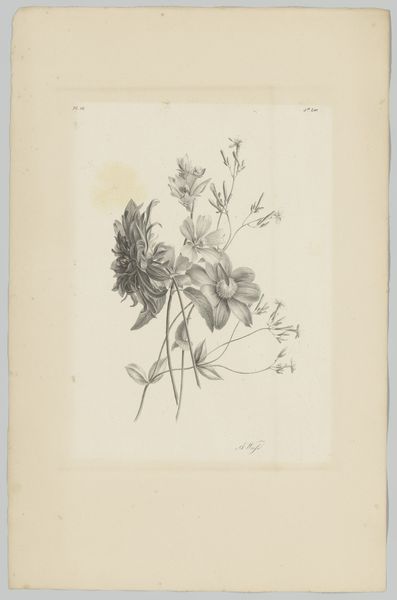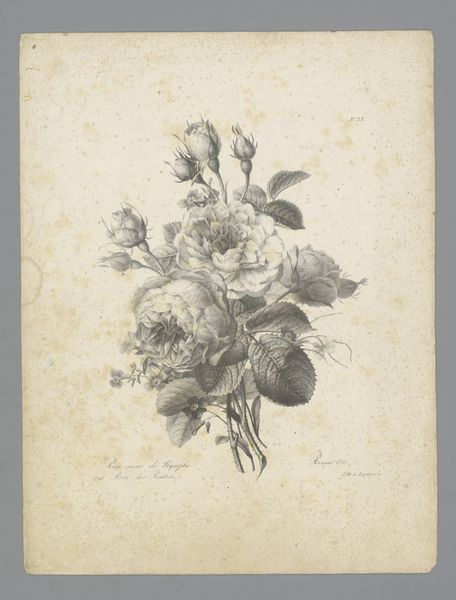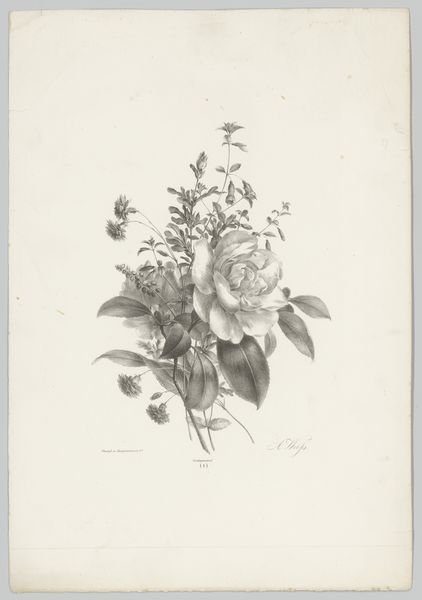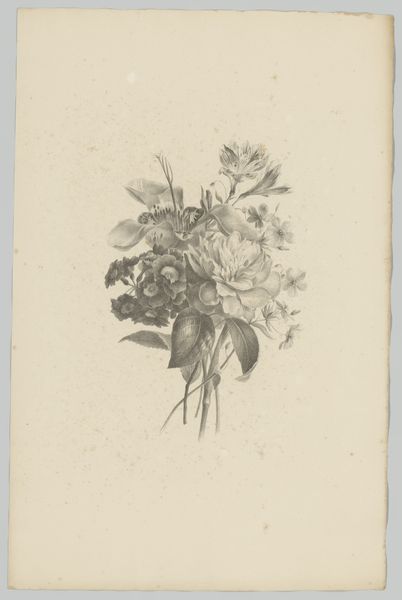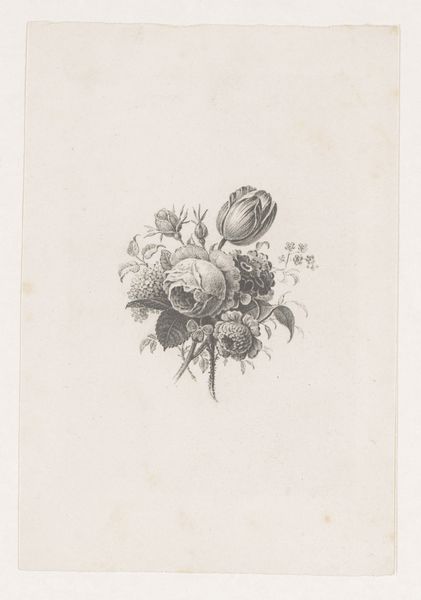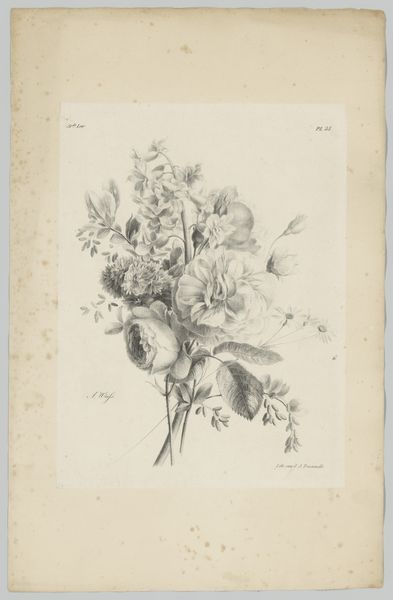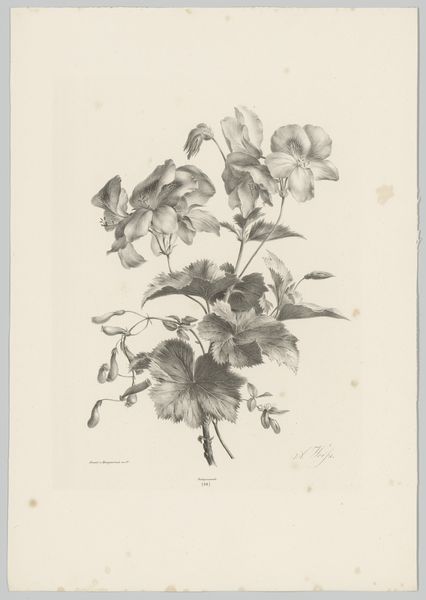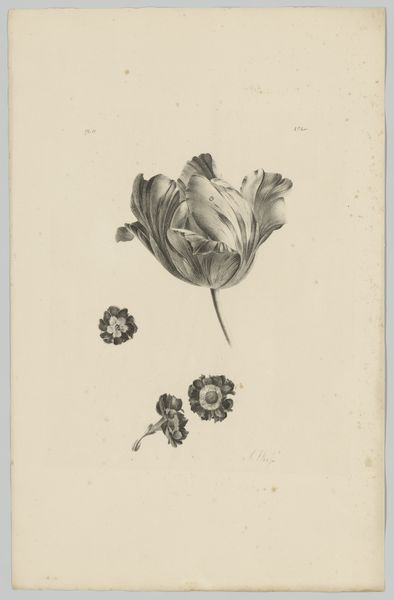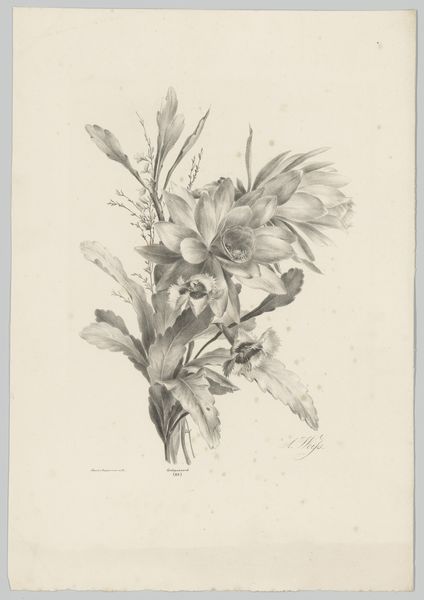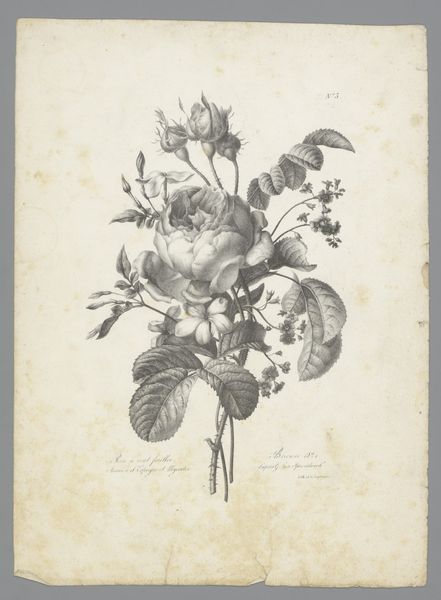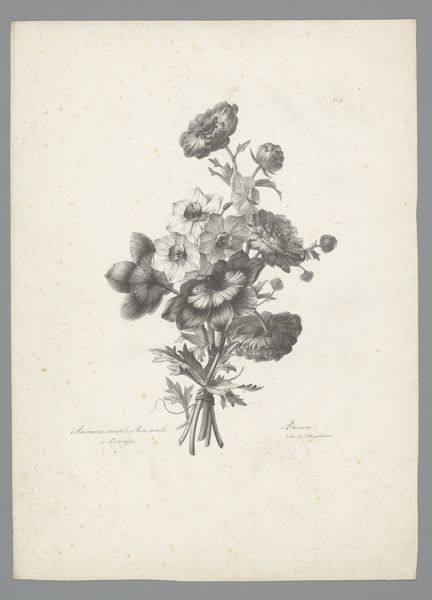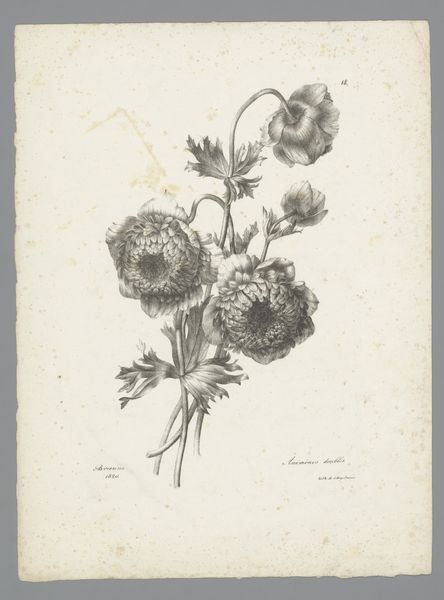
drawing, pencil
#
drawing
#
coloured pencil
#
romanticism
#
pencil
#
realism
Dimensions: height 478 mm, width 308 mm
Copyright: Rijks Museum: Open Domain
Curator: I find "Diverse Bloemen," dating roughly from 1820 to 1833 and held here at the Rijksmuseum, to be a compelling work. Its rendering of assorted blossoms through the delicate interplay of pencil and colored pencil is quite striking. Editor: It’s undeniably graceful. The light falls softly, and the composition, though dense, still breathes. It feels very studied, very controlled. Almost academic, even. Curator: Floral studies such as this reflected the social and intellectual currents of the time. In the early 19th century, the detailed observation and classification of the natural world—think botanical illustration—became deeply entwined with ideas about social order and the advancement of knowledge, especially as it relates to the rise of bourgeois class. Editor: Agreed, the artist has clearly mastered the delicate art of representation. But it is much more than that. Note the layering of tones, the subtle shift from light to shadow. This adds volume and enhances the three-dimensionality to each flower, while creating harmony in the composition. It achieves that formal sense, wouldn’t you agree? Curator: Well, to me it highlights how the artist, likely responding to Romanticism, sought to capture not only botanical accuracy, but a specific aesthetic tied to sentimentality around nature. Editor: Perhaps. The subtle contrasts could point to feelings about change and life's brevity. But I argue it comes down to masterful composition first. It draws in viewers to carefully engage in this still life of botanical marvel. Curator: I’d say it pulls the viewer into considering themes of beauty, but more than that, the societal structures that dictated what “beauty” meant and who had the privilege to appreciate it. It encourages critical viewing of class structures embedded in visual imagery. Editor: I can see how you arrived at that conclusion; nevertheless, what is truly interesting is the enduring interplay between light, shade and composition. The use of both pencil and colored pencil to produce soft nuances, adds a timeless allure, and transcends purely symbolic reading. Curator: Ultimately, “Diverse Bloemen” invites us to reflect on the complex interplay between art, nature, and the social narratives that frame our understanding. Editor: Yes, through the simple interplay of tone and texture a piece, through artifice, attains vitality. A worthy experience in careful observation.
Comments
No comments
Be the first to comment and join the conversation on the ultimate creative platform.
